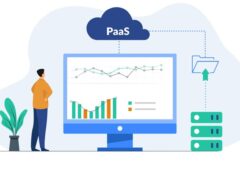Observability requires a user-centric mindset and approach. While traditional (black box) monitoring provides measurements that indicate whether a system is operational or not, observability goes further by showing whether performance is actually meeting business and user needs.
A server is online and available, but the applications it supports are not running. The network is up, but a user’s transactions are not recorded.
Your site is optimized with one web browser, but not the others.
These are all malfunctions that IT teams must identify as quickly as possible before users start complaining or leave your site/application for better service. These more or less large grains of sand can have an impact on customer loyalty, but also the motivation of your employees.
Hence the need to rely on observability tools on data pipelines without further delay. In addition to the classic logs, metrics and alerts for each component of your infrastructure, here are our top three tips:
Make Observability A Principle Of Development
The mentalities of the “devs” must evolve. ITOM (IT Operations Management) brings together all the processes and services managed by the IT team. But who better than developers to diagnose errors in the applications they have developed! In many cases, this constraint leads to running an instance of an open source monitoring tool on the application server(s). This situation can be avoided by making observability a critical step in the CI/CD pipeline, not an afterthought.
Get Monitoring Tools Designed For Observability
Optimizing the user experience by ensuring that each application is available, functional, fast and efficient on all channels has become a major asset.
It is therefore essential to rely on APM (Application Performance Management) tools or, increasingly, open source monitoring tools such as Prometheus to measure operational parameters such as application, client and server side errors that can occur during the normal operation of an application.
The use of “digital experience management tools” makes it possible to answer questions such as: can my user access the application and are there transactional failures in his experience?
Simplify Tooling
The proliferation of redundant tools between IT and DevOps makes it difficult to implement an effective observability strategy. It may make sense to rely on a platform solution that can manage and unify all data. This saves time for both developers and operators.
Observability is therefore a method, and a state of mind, which is essential for enhancing agility. Using these tools to collect actionable data not only helps to know when an error or incident occurs, but more importantly, why.
Also Read: Importance Of Visual Communication For A Business




